|
|
Post by Melanie on Nov 8, 2005 13:22:30 GMT
The Eastern Moa lived in scrub and low forest in the eastern South Island and stood about 1.5 metres tall and weighed about 51–70 kilograms. The Eastern Moa and the Coastal Moa and the Stout-legged Moa are stout, short–legged birds with a broad blunt bill, the Stout–legged Moa being the stoutest of the three species of the sub family Emeiae. However, there is a wide variability in size within species, some birds being twice as big as the smallest in the species. The Easterm Moa, together with the Stout–legged Moa, was widepsread east of the Alps in the South Island and dominant along the eastern coast. The Coastal Moa, the Eastern Moa and the Stout–legged Moa had a diet probably dominated by fruit and leaves and large insects, unlike the larger birds which had a more fibrous diet consisting of twigs as well. All Moa species, as in all birds, had a syrinx, birds’ vocal organ. Worthy and Holdaway postulate that because the Coastal Moa, the Eastern Moa and the Stout–legged Moa, together with the Upland Moa had the smallest olfactory chambers, they had the greatest vocal abilities. They perhaps needed loud calls in their mixed dense grassland, shrubland and forest environments. Males may have had lek behavior or even been noctural. We don’t know. 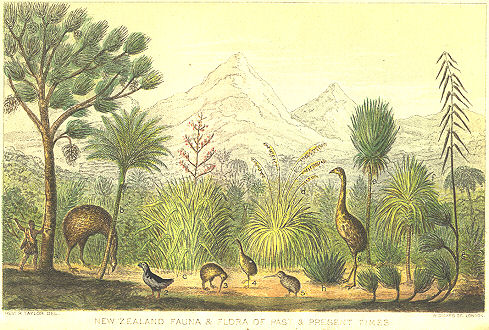 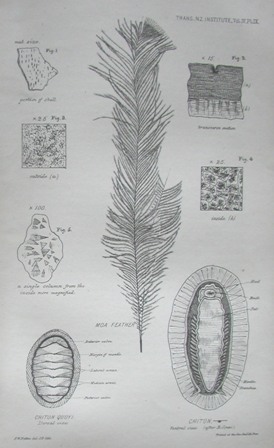 source: www.nzbirds.com/birds/moaeastern.html |
|
|
|
Post by another specialist on Nov 8, 2005 14:25:20 GMT
|
|
|
|
Post by sebbe67 on Dec 18, 2005 0:05:42 GMT
|
|
|
|
Post by another specialist on Dec 22, 2005 8:27:52 GMT
The museum collection Moas can be found in various museums all over the world. In some cases complete skeletons have been preserved. The National Museum of Natural History possesses a skeleton, which was originally labelled as the elephantbird Aepyornis maximus. Re-examination showed it to be Emeus crassus ( Owen, 1846) one of the smaller species of moa. Apart from this skeleton, the museum possesses a vertebra and fibula of a moa which were excavated in 1949 in Pyramid Valley, a famous site for moa remains on South Island. They have been identified as Dinornis, but it is possible that they belong to one of the other three moa genera which have been found on this site. |
|
|
|
Post by another specialist on Dec 22, 2005 17:45:18 GMT
|
|
|
|
Post by RSN on Jan 15, 2006 20:32:56 GMT
|
|
|
|
Post by another specialist on Feb 23, 2006 8:01:57 GMT
RSN Its the same image as i've posted previously just mine is a transparent version
|
|
|
|
Post by Carlos on Jan 2, 2007 12:25:33 GMT
|
|
|
|
Post by another specialist on Jul 24, 2008 16:10:07 GMT
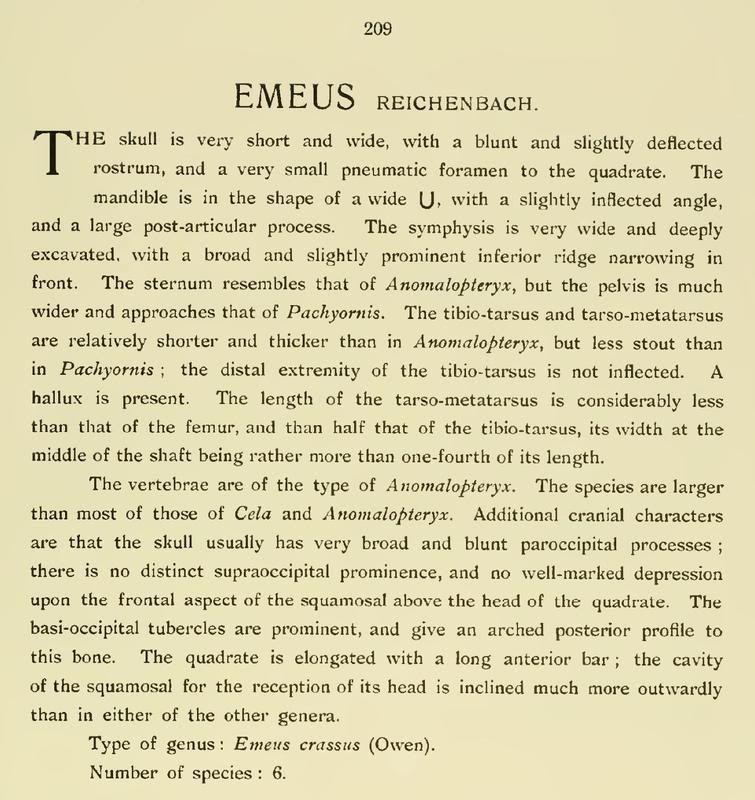 Extinct birds : an attempt to unite in one volume a short account of those birds which have become extinct in historical times : that is, within the last six or seven hundred years : to which are added a few which still exist, but are on the verge of extinction (1907) |
|
|
|
Post by another specialist on Jul 24, 2008 16:11:37 GMT
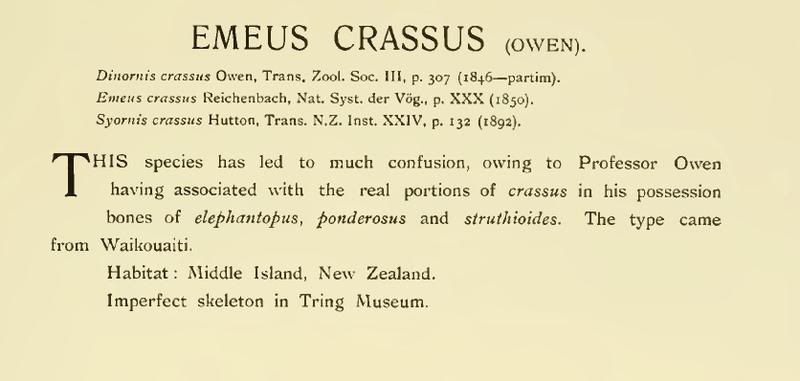 Extinct birds : an attempt to unite in one volume a short account of those birds which have become extinct in historical times : that is, within the last six or seven hundred years : to which are added a few which still exist, but are on the verge of extinction (1907) |
|
|
|
Post by another specialist on Jul 25, 2008 7:59:29 GMT
Emeus huttoni (Owen 1879), was Dinornis huttonii Owen 1879
= Emeus crassus (Owen, 1846)
|
|
|
|
Post by another specialist on Aug 9, 2008 3:50:23 GMT
Both classed now as Eastern Moa Emeus crassus 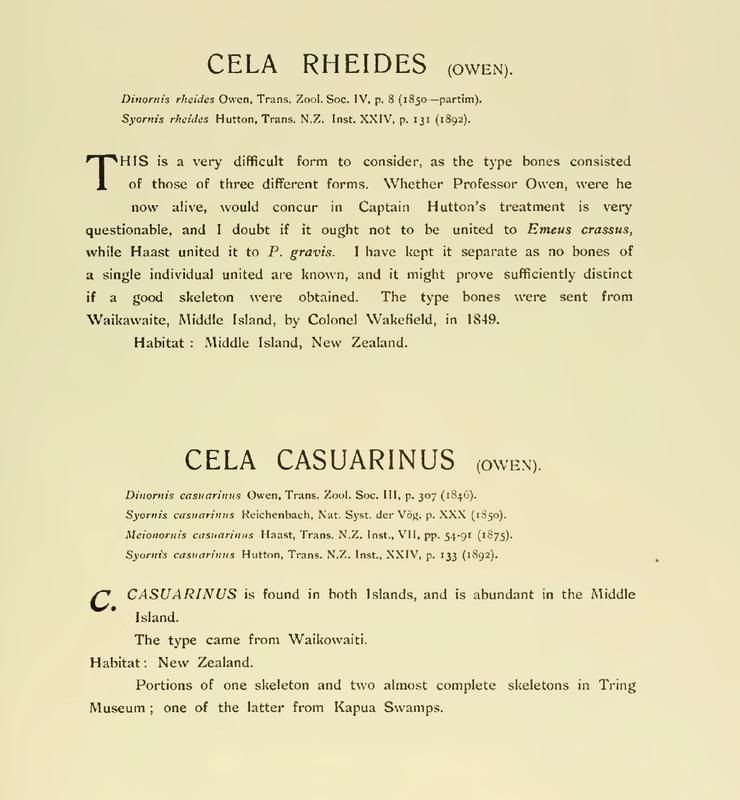 Extinct birds : an attempt to unite in one volume a short account of those birds which have become extinct in historical times : that is, within the last six or seven hundred years : to which are added a few which still exist, but are on the verge of extinction (1907) |
|
Deleted
Deleted Member
Posts: 0
|
Post by Deleted on Dec 18, 2008 20:47:04 GMT
Emeus crassus  Photo made by me ;D in the Senckenberg-Museum in Frankfurt a. Main / Germany. |
|
|
|
Post by another specialist on May 1, 2009 11:50:29 GMT
My own photos taken in the Natural History Museum at Tring - April 30 2009 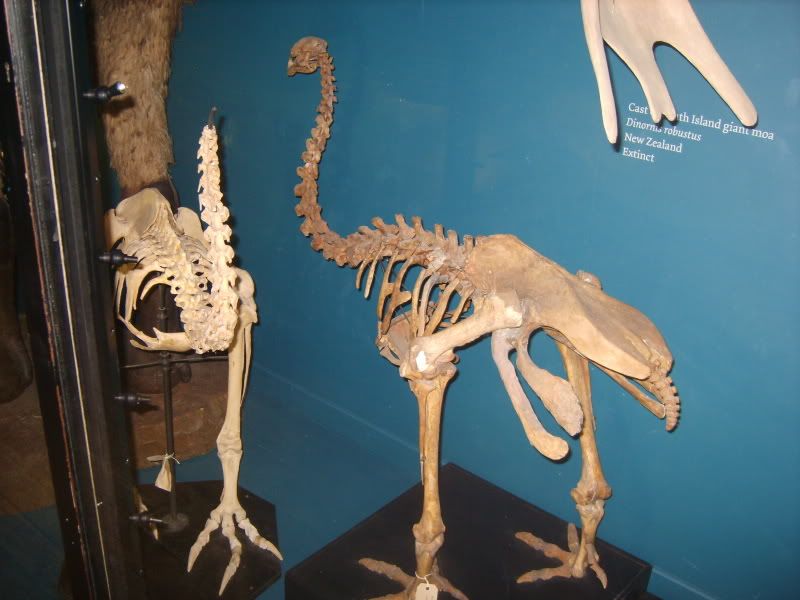 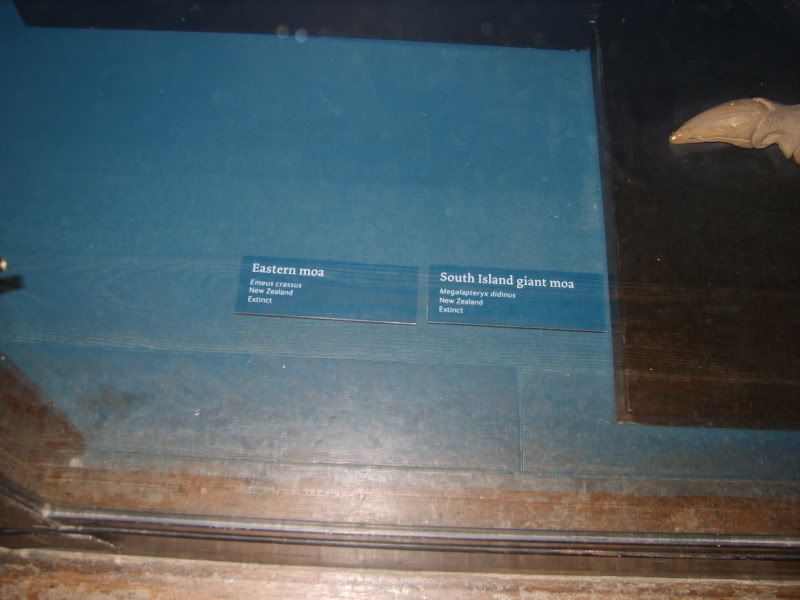 |
|
|
|
Post by surroundx on May 8, 2014 7:06:38 GMT
Zinoviev, A. V. (2013). Notes on the pelvic musculature of Emeus crassus and Dinornis robustus (Aves: Dinornithiformes). Paleontological Journal 47(11): 1245-1251. [ Abstract] |
|
|
|
Post by surroundx on Mar 21, 2015 0:59:01 GMT
Zinoviev, Andrei V. (2015). Comparative anatomy of the intertarsal joint in extant and fossil birds: inferences for the locomotion of Hesperornis regalis (Hesperornithiformes) and Emeus crassus (Dinornithiformes). Journal of Ornithology. DOI: 10.1007/s10336-015-1195-4. [ Abstract] |
|
|
|
Post by surroundx on May 7, 2015 9:00:35 GMT
Allentoft, M. E., Scofield, R. P., Oskam, C. L.,Hale, M. L., Holdaway, Richard N. and Bunce, M. (2011). A molecular characterization of a newly discovered megafaunal fossil site in North Canterbury, South Island, New Zealand. Journal of the Royal Society of New Zealand 42(4): 241-256. |
|
|
|
Post by surroundx on Nov 14, 2016 11:47:25 GMT
|
|
|
|
Post by surroundx on Aug 1, 2017 10:50:05 GMT
|
|
|
|
Post by surroundx on Nov 16, 2017 10:54:53 GMT
|
|